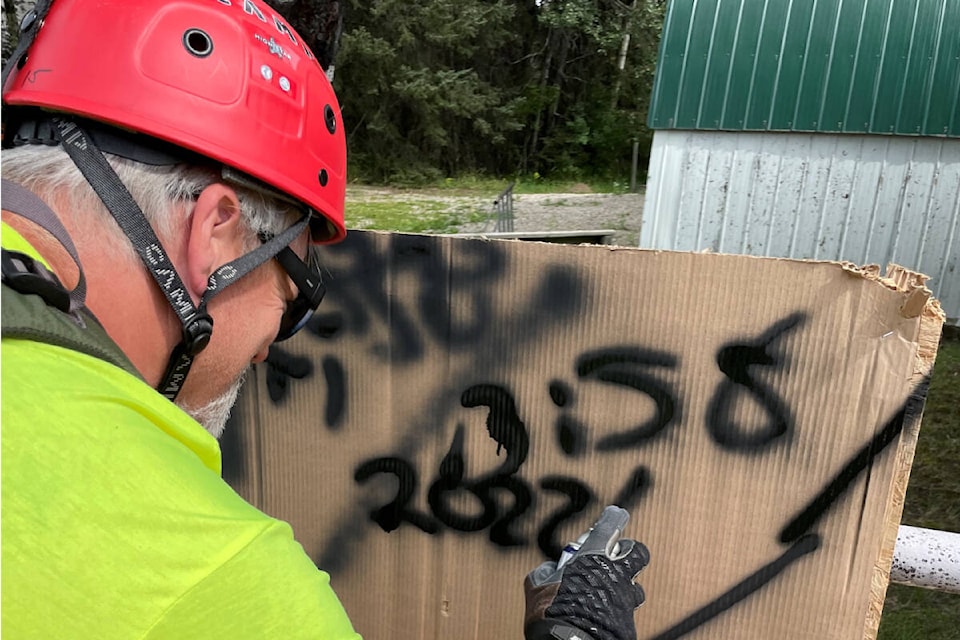Sundre search and rescue trainer Bruce Robb sums up their mission simply.
“Standing around looking concerned is not an option. We need to know what to do, when to do it and how to do it,” said Robb, who is director of training for Sundre Volunteer Search and Rescue Society.
Eight from his group joined seven other search and rescue volunteers from Calgary, Rocky Mountain House and Mountain View County in a light disaster search and rescue training exercise last weekend in Bergen, located south of Sundre.
The Disaster Assistance Response Training was aimed at developing search and rescue skills outside the intensive techniques requiring specially designed gear or heavy equipment that other first responders and rescue organizations employ.
“What can a group of people with very little equipment do to help the most number of people,” is how he describes the training goal.
Statistics show that less than 15 to 20 per cent of people who are trapped in disasters must be extricated with heavy equipment, he said.
“Most can be done with very little equipment,” he said, adding they looked at what a rescuer can do with a crowbar and cribbing (supports).
The exercise was led by 40-year search and rescue expert Richard Smith, who is an instructor and trainer with SARI Canada and a search and rescue manafer with Mountain View Search and Rescue.
Smith is president of SARI Canada and was joined by group member Scott Wright, a Sasktchewan-based search and rescue expert.
Robb said part of the training involved both interpreting and learning how to add the sometimes complicated symbols, words and marks that searchers routinely put on buildings or other sites so those following know what has been done.
The marks and codes indicate whether a building is habitable, whether there were people inside, who may have already been rescued. Whether there are dangers present, such as gas leaks or live electrical wires, or heavier equipment is needed can also be indicated.
“It’s like a storyboard each group adds to it until it is completed.”
Volunteers also learned how to extricate people from a wall collapse. A picnic table and doors were used as props to simulate a wall that had fallen, trapping someone.
Robb said the training was well received.
“I would say that people were enthusiastic to get some new and different knowledge,” he said. “This has nothing to ground search and rescue, the back country rescue. This is a new skill.”
There is no standardized light disaster search and rescue manual. Techniques passed on last weekend included best practices and standards developed by agencies such as the U.S. Federal Emergency Management Agency, SARI Canada and Emergency Response Institute Canada, an emergency management and training consultancy founded in Alberta in 1990.
The techniques can be used for natural and manmade disasters and focus on safely conducting building to building searches, first aid, rescue and recovery.
Those who participated in the exercise planned to take what they learned back to their organizations to pass on to others.
